By Aviraj Gokool
(This is part of our ongoing series, Lost Kinjo- a look at the more than 40 Japanese communities that disappeared after World War II. It is supported by funding from the California Public Library Civil Liberties Project and the Takahashi Family Foundation.)
Aglow with streaks of red and white from car lights, Sawtelle Boulevard’s flow of people never seems to waver, especially with the number of trendy restaurants situated on the strip. Once the evening sun tints the sky orange and the moon reveals itself against the starless navy sky, the tide of people surge in and out of Japanese, Filipino, and Mexican eateries. With such big waves of customers, cars, and new businesses, I have to wonder when the next tidal wave will hit.
Sawtelle has become a go-to hangout spot for many Angelinos with the neighborhood being only a short distance from hotspots like Santa Monica, Westwood, and Venice. Though, the glamorous eateries and range of businesses that Sawtelle is known for are new additions to former residents — like Sandy Toshiyuki — who grew up on the strip.
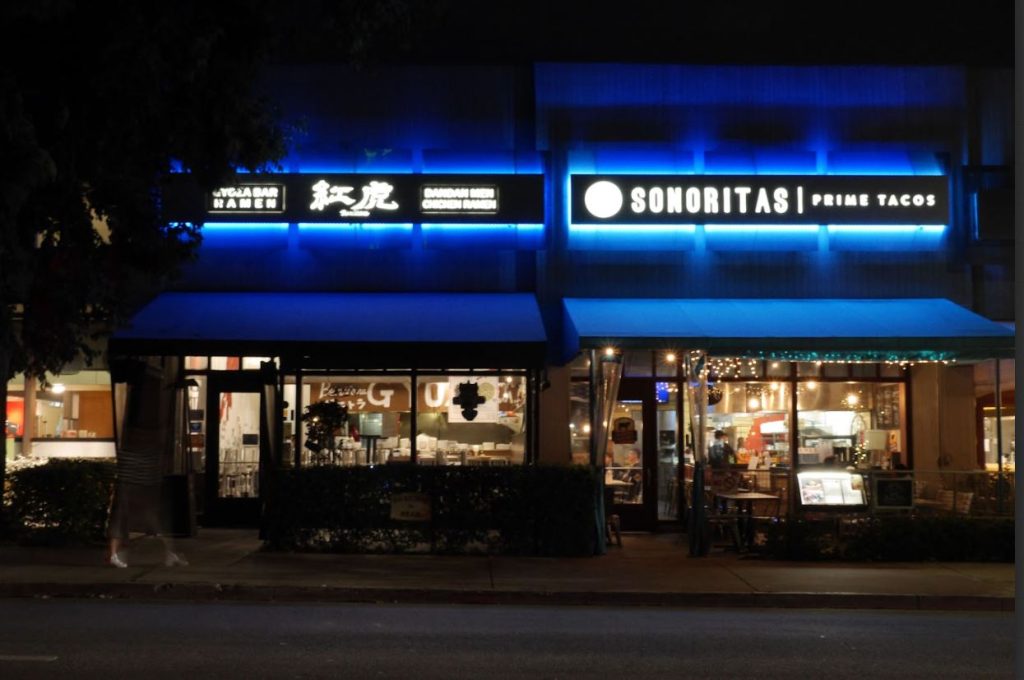
“There was a time, as a child, I knew everybody on both sides of my street. I think it’s important to know your neighbors. To talk to, whoever is new, has moved in. That it’s great to have this extended community,” Toshiyuki said in a Sawtelle Japanese Association (SJA) interview.
In the 1910s, Sawtelle was one of the few places Japanese Issei (immigrants) were able to rent due to the Alien Land Law Act. What was essentially forced segregation turned out to be an ideal place to settle as the wide stretch of empty farmland was rich in soil and mild in temperature. Plus, being close to the shore gave these Issei settlers from Kumamoto a sense of nostalgia. It was perfect for Issei farmers and gardeners.
Though, life wasn’t perfect for early Issei migrants. Like in most other early Japantowns, Sawtelle’s Issei faced discrimination, language barriers, and laws that oppressed them from owning farmland and proper housing. But through the support of locally established stores, Kenjinkai (an association of people from the same prefecture), and community centers, Sawtelle Issei farmers were able to create a flourishing enclave in a pocket of West Los Angeles.
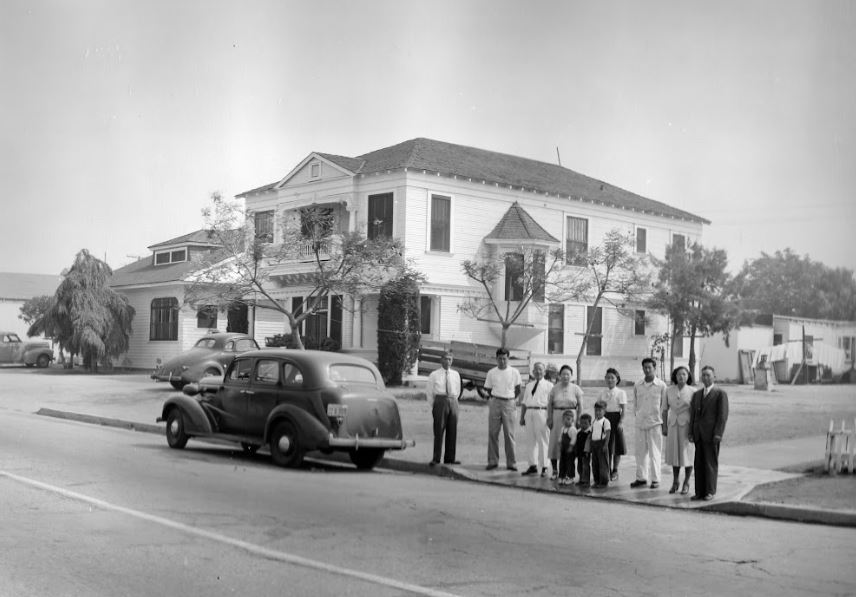
With an influx of migrants swarming to West LA in the mid-1920s due to the movie industry and many Americans chasing the Hollywood dream, the demand for Japanese gardeners, nurserymen, and domestics increased and the area became ideal for raising families. By 1941, Sawtelle boasted 26 nurseries/florist shops, 8 boarding houses (which acted as a “gardeners’ college”), 8 gas stations/garages, 4 churches, 3 grocery stores, 5 shops, 4 barbers, 2 sewing schools, 1 beauty salon, and 1 Japanese language school and community hall. By this time, many Issei and Nisei (first-generation Japanese Americans) gardeners had clients ranging from elderly people in a neighboring city to affluent Hollywood stars like Marlyn Monroe.
“We watched our fathers interact with some of L.A.’s wealthiest individuals, some of them moguls of business, others big-name celebrities (Marilyn Monroe was one of my father’s customers),” John Tateishi, former Japanese American Citizens League national director writes. “In my father’s case, these wealthy customers got no greater respect or attention than did the little old lady in Santa Monica whose small property my father also attended for years.”
Issei gardeners and farmers had an abundance of work coming from all over West LA. Local shops supported fellow residents as they watched over kids, left tabs open for locals that couldn’t pay, and had warm relations with everyone in the neighborhood. Japanese culture was preserved through the community hall and language school. Issei settlers successfully recreated the Japanese way of life and brought a piece of Japan to a small neighborhood. Sawtelle thrived.
But with such successes and high tides comes the reality of the times. Once the bombs of Pearl Harbor hit on December 7, 1941, the waves crashed down on this peaceful city, washing away everything that was built. Families forcefully ripped from their homes as they had to discard anything that made them look too patriotic for Japan. Kids separated from fathers. Store fronts left empty. Issei and Nisei selling their belongings at cut rates. People living in angst, unsure of what will come next, where they will go, or when they can come back to their former lives. The end of 1941 was a traumatic year for Issei and Nisei along the West Coast.
With families sent to incarceration camps, many to Manzanar, Sawtelle’s defining characteristics vanished. Japanese was hardly used. The warm reception of shop owners, Japanese mannerisms of bowing and endless thanking, and the joyful laughter of neighborhood children were gone. All that was left were empty shops waiting to be leased, transformed, and recolonized. Though, this recolonization didn’t occur. Sawtelle was one of the lucky neighborhoods where non-Japanese neighbors and migrant workers watched over and tended the shops. Not every shop was saved, but select families were able to return to their former shops. One of these preserved buildings was Kobayakawa Boarding House.
Riichi Ishioka, an immigrant from Hiroshima, opened Kobayakawa Boarding House in 1926. Since establishing the house, he taught guests techniques on gardening and landscaping. Many of these former “students” went on to attract customers from Brentwood, Bel Air, and Westwood. As such, 95% of guests were gardeners looking to learn from Ishioka or other tenants. Like the other seven boarding houses in Sawtelle, Kobayakawa became an unofficial “gardening college.”
Though, when the outbreak of the war began, Ishioka, his family, and five other tenants living in the boarding house escaped Executive Order 9066 and moved to Colorado where the state governor, Ralph Carr, openly welcomed Japanese Issei and Nisei. While Ishioka worked three jobs in Colorado, a Caucasian man named Schneider looked after Kobayakawa Boarding House.
A real estate and financial specialist, Scneider had an easy opportunity to take advantage of the war and take the property for himself. Instead, he rented the house out to the Douglas Company employees and managed the property while helping Ishioka with mortgage payments.
After four and a half years, Ishioka and his family resumed the boarding house business. In large thanks to Schnieder, they were the first business to re-open for business in Sawtelle after the war. As such, this made the transitioning process much easier for former and new Sawtelle residents as the boarding house provided proper shelter, food, and comfort for post-war incarceration prisoners. But the boarding house and Japanese American community were met with contempt and racism upon returning.
“If you had sons in the service that died, you’re allowed to put a little flag up with two stars which meant you lost two sons,” Tosh Ishioka, son of Riichi Ishioka, said in an SJA interview. “They placed it right where the rock went through the window and dramatically, following the two stars, overnight it just stopped.”
Kids were called racial slurs on the way to school, people pulled over for random “checks,” and pedestrians threw rocks and eggs at Japanese people’s houses. But their spirit wasn’t broken. With the reestablishment of the Japanese language school, judo hall, and movie theater that premiered new Japanese films, the Japanese Americans had multiple social hubs and support groups to fall back on and find support in. People of all ages relied on each other during the hardships and stress of resettlement.
With the increase of resettled families successfully finding housing and a strong foothold back into the neighborhood, the demand for consumer goods, markets, and services (like barbershops) increased. Several years after the war, the Sawtelle community regained its flow all from the strength and support of the community.
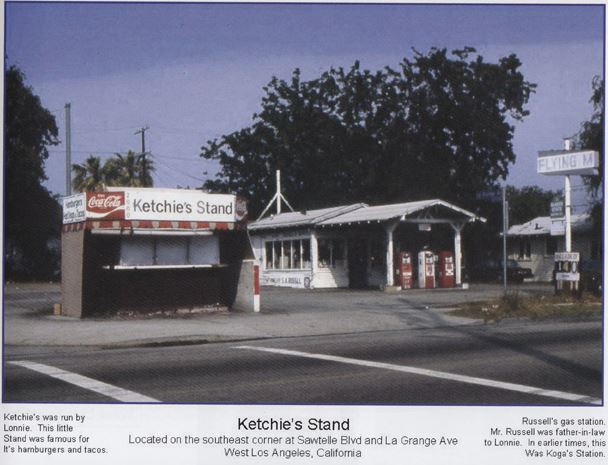
“What I saw on the 2000 block of Sawtelle was really like an extension of the Japanese language school and the West LA Buddhist Temple,” Ted Tanaka, a former Sawtelle resident, said in an SJA interview. “It was altogether a social and retail and a service center for my parents and their Issei friends who could not speak English.” a former Sawtelle resident.
As the years passed, restricting laws — like the Alien Land Law — were invalidated, allowing Japanese Americans to finally own land in other parts of California as well as pursue occupations outside of gardening and farming. Kids were encouraged to pursue a college degree, go into a profession that secured more wealth, and move out of the neighborhood. This meant that boarding houses like Kobayakawa Boarding House were eventually shut down as there were fewer gardeners, leaving room for other families, or even corporate companies, to replace these legacy stores and buildings.
With the waves of capitalism eventually leaking into various sections of LA, modern Sawtelle is showing cracks. Full of fantastic restaurants, high energy, and a short distance from the beach, it’s no wonder Angelinos and tourists alike are so allured to this town. But that also means rich capitalist companies are finding incentive to open up another chain store in this former Japanese enclave.
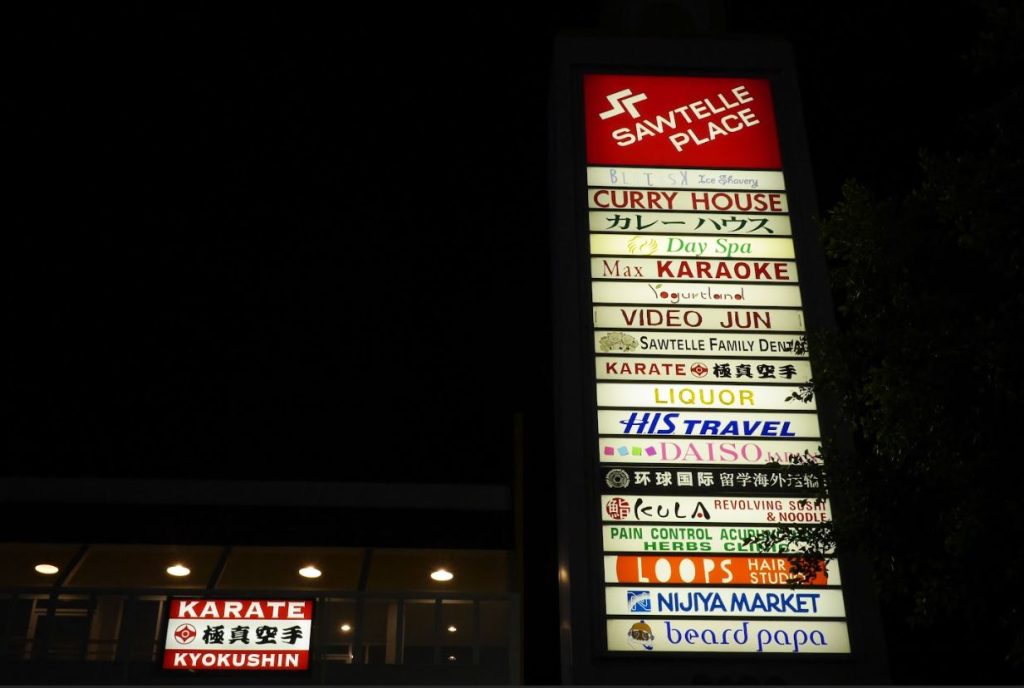
To combat this capitalist venture, preserve the Sawtelle culture and community, and to further develop and uphold the cultural city of Sawtelle, residents formed the Sawtelle Japantown Association. Some actions they took to preserving this Japantown were holding talks where community members shared stories of growing up in the neighborhood, made a Minecraft documentary telling the history and evolution of Sawtelle, and became officially recognized as a Japantown by the state of California (the city is unofficially known as “Little Osaka”). They also throw community events like celebrating Japanese national holiday Children’s Day and truly embrace Japanese culture in LA.
However, change is inevitable and like all other cities, new businesses will eventually take over these small historic ones. If anything, having a more Japantown with different styles of cuisines outside of Japanese food would attract a diverse range of people and attention in the neighborhood. But what some SJA members, like Randall Fujimoto, are afraid of losing is not only the history, but the characteristics of Sawtelle being a Japantown.
“Different diverse cultures, opinions, ideas and all that stuff from diversity,” Fujimoto told AsAmNews. “We know diversity leads to innovation so the more diverse we can be, the more innovative we can be. If we wipe out the diversity, we wipe out the innovation and then we [become] a follower country. So to me, the bigger picture is how to keep diversity alive, seeing that is a key focal strength of our society here.”
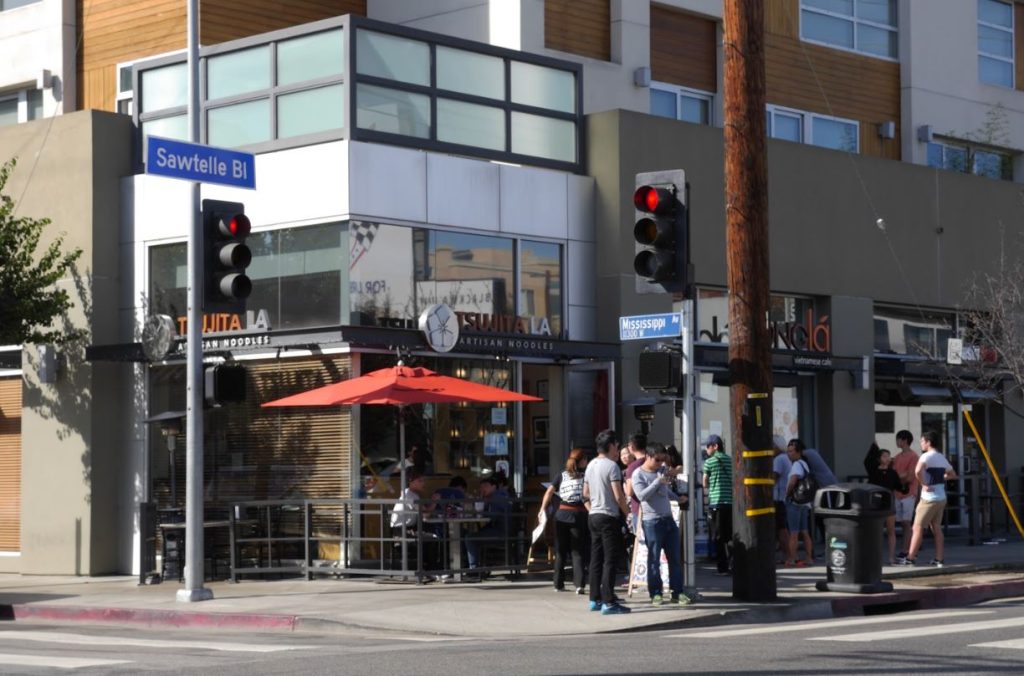
Fujimoto shared some of SJA’s future plans with AsAmNews. From creating a community design overlay that guides businesses on how to bring a Japanese charm to either the physical storefront or implementing Japanese mannerisms into their customer service, to weaving the stretch of businesses into a cooperative business association where owners can plan community events and garner good relations with one another, to having residents partake in community festivals and events, SJA hopes these actions will be enough to help preserve the Japantown atmosphere Sawtelle has had since the early 1900s.
Fujimoto also hopes his next upcoming augmented reality project will help with that goal too. An interactive historical game, players use their phone to play a walking scavenger hunt where they use Sawtelle as a narrative platform and along the way, meet historical figures, visit and learn about past businesses, buildings, neighbors, and learn about Sawtelle’s history while doing small tasks.
Though, with so many ambitious ideas and plans to preserve the city, SJA finds itself with an overload of work to ensure the city doesn’t become a homogenous city run by capitalist America where chain stores and businesses erase the Japanese aspect of Sawtelle. To support SJA and the city of Sawtelle, you can become a part of the community and attend meetings, events, and programs by joining through their website.
“Every ethnic neighborhood that persists over time has one or more strong community organizations that keeps people, keeps the community together,” Fujimoto told AsAmNews.
Much like how an American store in Japan can leave customers feeling a little more American through their mannerisms, store designs, and passion, Fujimoto and the SJA’s ultimate goal is for businesses to give off the same atmosphere so that visitors leave Sawtelle feeling a little more Japanese.
With Sawtelle overflowing with people from all over LA almost every weekend for the past few decades and the SJA tying the community together, the city is already on the right trajectory of sharing that Japanese fervor amongst visitors and residents alike. Just as Order 9066 failed to erase the culture from this city, I have strong faith that Japantown Sawtelle will persevere as the love, care, and passion for this neighborhood will never dry out.
AsAmNews is published by the non-profit, Asian American Media Inc.
We are supported through donations and such charitable organizations as the Robert Wood Johnson Foundation. A big thank you to all our readers who supported our year-end giving campaign. You helped us not only reach our goal, you busted through it. Donations to Asian American Media Inc and AsAmNews are tax-deductible. It’s never too late to give.
Please also follow us on Instagram, TikTok, Facebook, YouTube and X.

